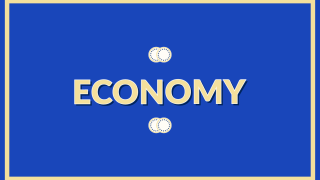Two days before the deadline for complying with the established obligations issued in the transitory articles of the Constitutional reform, the Federal Telecommunications Institute (IFT) ended up carrying out what they themselves called “a Constitutional agenda”. Some of the aforementioned obligations was determining the existence of major stakeholders in the telecommunications and radio broadcasting which is why, on March 9th, the IFT labeled América Móvil and Televisa with such characteristics in the aforementioned areas, respectively. Although the regulatory body still does not have the legal and operational tools that are expected to be provided by the secondary laws of the Constitutional reform, the IFT has made an effort in basing its main arguments on the 28th Constitutional article, which enables it to asymmetrically regulate stakeholders of the telecommunications sector in order to make them perform as major economic stakeholders, that is to say, those which have a 50% or higher share in its sector.
As it is well known, the complexity of regulating the aforementioned sector relies on the fact that those few stakeholders have a very large power, both economically as well as politically and, under the lack of authority regulation, are willing to take advantage by imposing barriers to the entry of new competitors and affecting final users with high prices, low supply and/or bad service quality and even political complicity. That is why the reform believes that is essential to set out a different definition than the “substantial power” or “dominance” concepts issued by the Federal Competition Law. That is to say, the “preponderance”, in terms of the new legislation, refers to the economic group of interest that dominates each sector, which must condition its behavior in order to balance the competition field in the benefit of final consumers and the access for new stakeholders. Among the new conditions imposed by IFT to América Móvil and Televisa, several measures regarding interconnection, access and shared infrastructure use stand out, as well as user protection, economic competition, accounting segregation, specific measures in mobile and fixed telephone lines, content and the effective disaggregation of local network.
In the framework of a market economy, the objective of regulating an area that presents faults – as the telecommunication sector – ought to consider several dimensions: on one hand, it should establish the necessary incentives for dominating companies to finally decrease their prices as well as give a broader coverage and an improved quality in its services; on the other hand, it should provide all competitors, current and potential, with the necessary judiciary certainty that will attract investments and expand all of its possibilities in the benefit of the population and competitiveness in the country.
The existence of secondary legislation in the telecommunications sector is essential for sending positive signals to other markets, such as energy, which is also waiting for the implementation of ambitious reforms. Until now, IFT has issued resolutions in the lack of clear rules. The consequences may result in complex scenarios. The possibility of the involved stakeholders submitting an amparo using these resolutions as their basis because there is no solid legal background or that the secondary legislation will finally contradict what has been issued by IFT and having the aforementioned resolutions blocked, could seriously undermine the regulator’s autonomy. In any given case, the vacuums that Mexico currently has in its telecommunications legislation will take away authority from the regulating entity, hindering it from taking a strong stance towards powerful stakeholders and will send mixed signs in this and other increasingly complex sectors. Perhaps the most fundamental issue at stake in this process is the autonomy of the regulator and its capacity to avoid being manipulated by the government or captured by the regulated entities. Finding an equilibrium can prove to be a difficult task.
CIDAC






Comments